
Background information
More than just bratwurst, beer and cheap cigars: impressions of «Schwingfest» – the Alpine wrestling festival
by Patrick Bardelli

Nowhere in Switzerland does hunting have such strong roots than in the canton of Graubünden. Hunting and this region go together like Läckerli biscuits and Basel. Let's track down the fine art of hunting.
A bang from the other side of the valley cut through the clear mountain air. 10.3 mm calibre. Then silence. In comparison, the 90 Swiss army assault rifle uses 5.56 mm calibre cartridges. We carried on, and a queasy feeling started to spread in my stomach. I joined Claudio, Marco and Marc on a hunt. Here in Graubünden, hunting is a well established tradition. Around 5,500 hunters are active in the region during this period. Hunting fever passes from father to son, from uncle to nephew. There's not a hunter behind every tree, but there's one behind every other. They wait for their «piece», game in hunting terms.
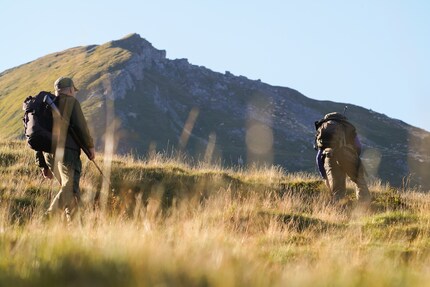
The fine art of hunting, I soon realised, is actually all about the fine art of waiting. We scrambled up Schamserberg on the southeast edge of Piz Beverin and studied the terrain around us with binoculars again and again. We walked, waited, observed, walked, waited. Until we finally stopped. The air was full of marmot calls. «Mungga» can also be shot. 4,640 were hunted last year.
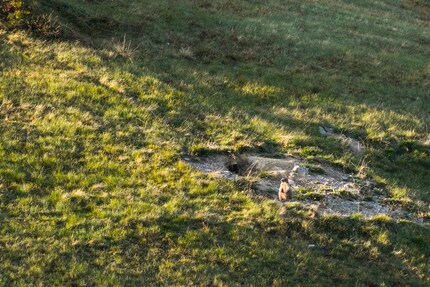
Aside from marmots, Claudio, Marco and Marc were mainly on the lookout for deer, stags and chamois. There are strict laws on what can be shot when, how and where. Failure to comply results in a fine or losing your licence. Hunting in Graubünden requires a licence. Obtaining a hunting licence gives you access to the entire canton except game reserves. Many other cantons operate hunting in specific areas. This involves a group of hunters having an allocated territory where only they can hunt.
«Look, he's got his trousers down and he's sullying our beautiful mountain landscape.» Claudio had spotted a hiker answering the call of nature. The binoculars went up. If only the guy had realised that four pairs of eyes had seen him peeing from 200 metres away.
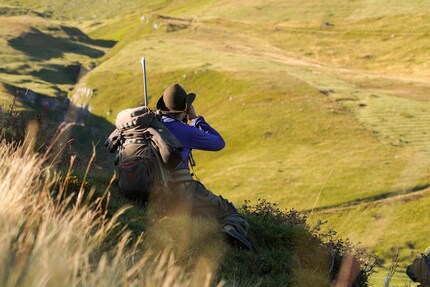
One guy was peeing, another was walking his dog on the mountain. Next, a motorbike headed down the slope. There was a lot going on at 2,000 metres above sea level. «It gets really busy at the weekends,» explained Claudio. His index finger stayed straight and didn't move to the trigger. There would be no shooting here today. After two hours, we made our way back to the hut empty-handed. The noble art of waiting.
Half way back, we came across a slope with high bushes and stopped. The hunters had seen deer here the previous day. Claudio suggested that Marc and I (as a hanger-on) go into the terrain, climb around 200 metres up the mountain and thump on the ground a bit. This «knocking» rouses the game, which may still be hiding. Claudio and Marco positioned themselves to the left and right.

Then I realised why every hunter has at least one bright orange piece of equipment with them. It sets them apart from the game, ensuring safety. Claudio lent me his orange hat so that I would be easily visible to him and Marco. Then things got underway. It was steep, the bushes were head-high and taller, and I soon got disorientated. I was supposed to move in a zig-zag pattern until I reached a distinctive rock. I had no idea where I was. No idea where I was going. «Please don't shoot,» I thought, panicked. My right foot got tangled in dense roots and I was nearly thrown down the hillside. My already dodgy knee began to hurt again. I wanted to get out of there. After about half an hour, I headed back down to Marco. Any deer? Negative. I didn't check whether one was still hiding. I was too preoccupied with myself.
«Did you hear the chamois call and the roebuck startle?» Marco asked me. I did. But I assumed it was a bird call and mistook the «startled» noise that Marco referred to as a dog barking. The lowland city dwellers have no idea what goes on up here. Marco explained it to me. Game up on the mountain had been disturbed by my presence and called out to let me know I should give myself up. And the barking? When deer are startled, they made a noise that can sound like a dog barking to the untrained ear. My eyes were untrained too, and the game remained hidden from them.
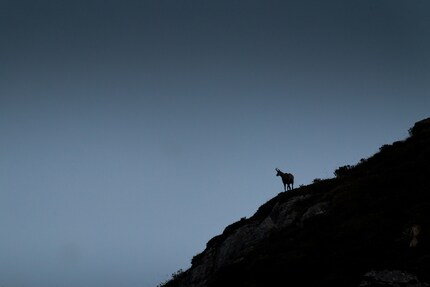
And then they suddenly appeared: the chamois. They emerged on the ridge above us and looked down at us in the hollow. It was the perfect postcard subject. I got goosebumps and felt small in the presence of such grandeur. On the rest of the way back to the hut, Claudio, Marco and Marc assessed the day. I stayed silent and took in the mountain scenery.
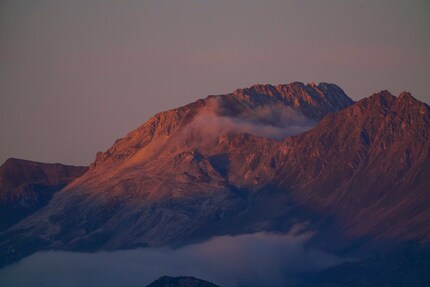
A childhood memory. My dad cooking game. The scent of red wine and fresh game hung in the air. We were back at the hut. Marco was cooking today. He served venison ragout and spätzle. It was the same smell. We ate by candlelight. It was so cosy it was almost clichéd. The uncomfortable feeling from earlier that afternoon had given way to a comforting warmth in my stomach.
Marco and Marc told me about hunting over the previous year and how they shot the deer that we'd eaten that day. Both of them remembered every detail. What the weather was like, where they had shot the deer and how long it had taken to recover it. I hadn't expected that. «We know about every piece of meat we eat over the year, what animal it comes from and how it was hunted,» Marc continued.
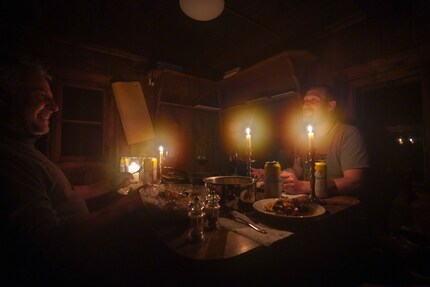
Suddenly, we had moved on to the topic of ethics and sustainability. Claudio had a clear stance. He said: «I know that hunting is controversial. I know that I'm killing an animal when I bend my finger and pull the trigger. And killing in itself doesn't give me any satisfaction. But the animal has never been caged. It hasn't been fattened up or given antibiotics. It hasn't been driven through half of Europe to be slaughtered or suffered any fear of death beforehand. I only eat meat that I've shot myself. All year round. For me, this is sustainable, local, organic meat consumption.»
Later on, I was lying in my sleeping bag and thinking about Claudio's words and my own meat consumption. I was pretty conflicted. On the one hand, I was happy that we hadn't killed anything that day. I'm a bit of a wimp in that respect. On the other hand, I'd devoured Marco's venison ragout after a long day. On the one hand, I buy meat from organic farmers, where I know the cow by name and know what kind of life it had. On the other, I occasionally turn to the supermarket freezer. But however I spin it, an animal has had to die for me. The fact that my wife and daughter are both vegetarians makes everything more complicated. I'm conflicted. And tired. It's time to let go of my thoughts. Goodnight.
Why do people still go hunting? In the second part of the Galaxus hunting report, I try to find an answer. Follow my profile here to make sure you don't miss it.
From radio journalist to product tester and storyteller, jogger to gravel bike novice and fitness enthusiast with barbells and dumbbells. I'm excited to see where the journey'll take me next.
Interesting facts about products, behind-the-scenes looks at manufacturers and deep-dives on interesting people.
Show all